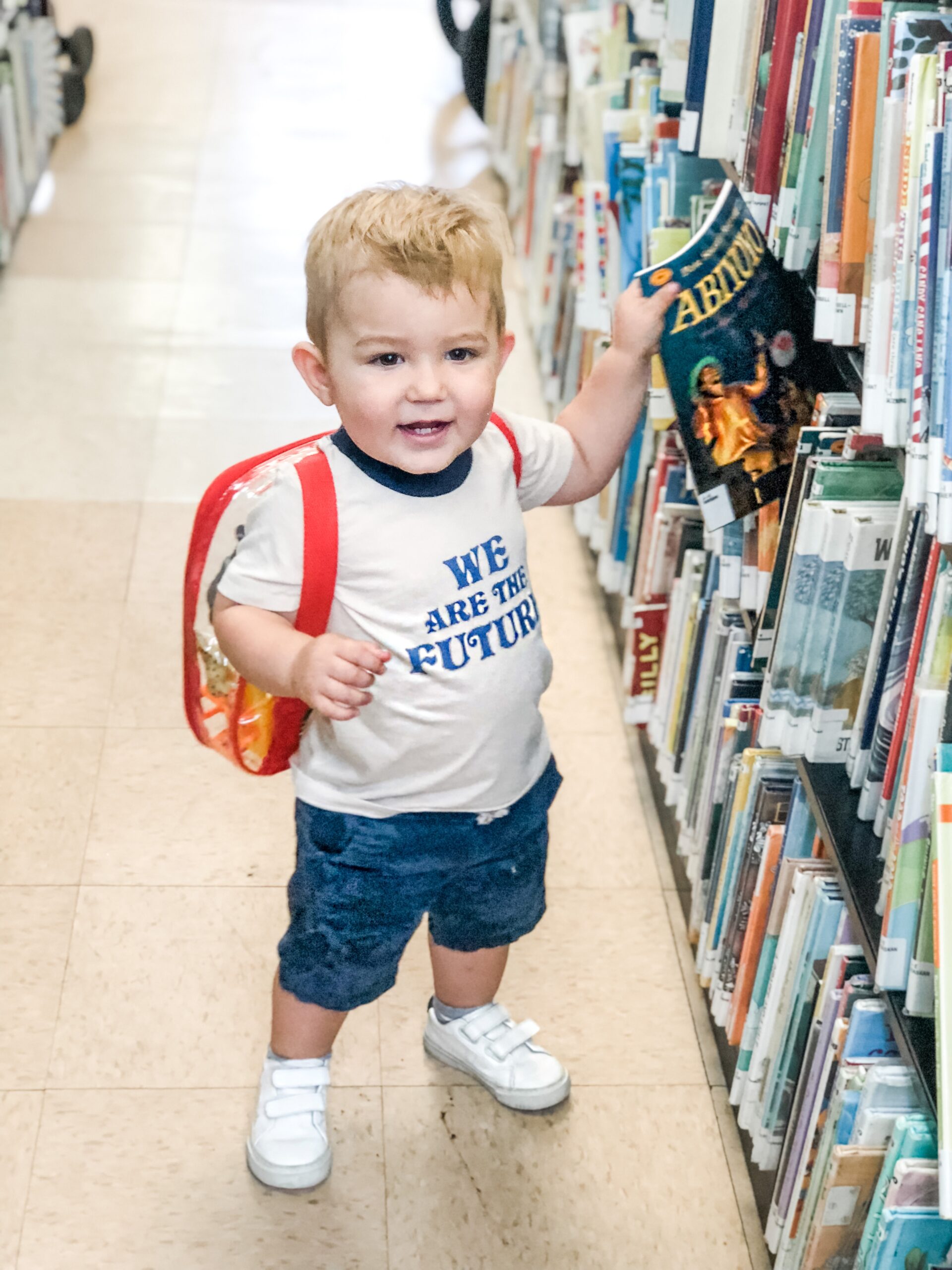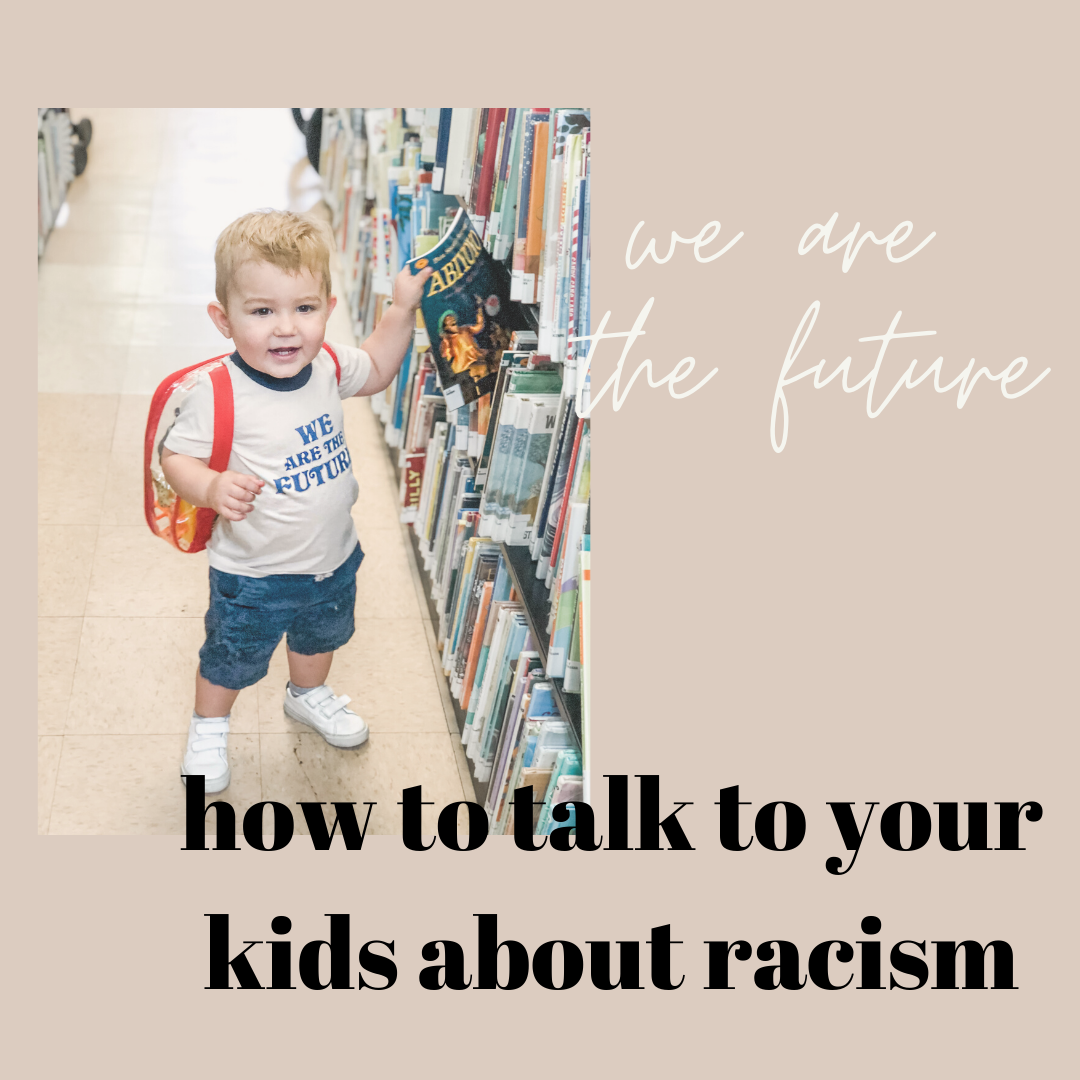
How To Talk To Kids About Racism
As a mother, watching all of the targeted hatred and violence to those that are BIPOC, I want to take action. George Floyd was someone’s son. His daughter had to watch her father be a martyr. Breonna Taylor’s mother’s said she was consumed at the time for her daughter’s safety during the pandemic and not an unwarranted raid by police on an innocent person. The list goes on.
The BIPOC community is feeling fed up and angered and while I understand that I’ll never understand what it’s like to be black in America—I’m standing with them. I’ve spent the past few days not quite sure of the best way to support. I physically cannot participate in protests with a newborn at home and donating to organizations or signing petitions are a good start, but I want to do more.
It occurred to me that using my platforms to share more information to others is a form of protest, hopefully collectively leading to change and reform. An effective way we can overcome this in time, is by talking to our children—our future—about race, kindness and equality from an early age.
If you’re a parent too, teaching kindness within your communities and valuing diversity is all of our duty. Children are not racist by nature. Sure, they see differences in skin color, but racism and hatred is learned. Start those conversations NOW.
If you think it’s hard to talk to your kids, watch this video to really see how hard it is for a BIPOC parent to talk to their kids.
YOUNG CHILDREN
I have a toddler and we’ve been having these conversations recently, but have integrated diversity in our lives for as long as he was alive. IT IS NEVER TOO YOUNG TO TEACH YOUR CHILDREN ABOUT KINDNESS TO PEOPLE OF OTHER SKIN COLORS.
I’ve spent the past week or so trying to educate myself further to be a better mom to teach my son. My husband is an educator, always working in diverse communities, so he’s helped guide me where I’ve lacked in my knowledge on this topic. There’s no reason to feel guilty or shaming anyone for not knowing the right things to say or show.
Here are great ways to start introducing communication on diversity with your kids:
The best things you can do from a young age, is to LEAD by example.
Make it a point to say “hi,” be kind and converse with others that are BIPOC (not just your nanny that you see regularly, but people you encounter in life). Encourage and foster diverse friendships for them, and for you as well.
READ them books with kids / people with different cultures and skin colors and that also encourage to be nice to everyone.
Parents Magazine featured a great round up of books to teach your kids about race.
This book on being kind has been such a great way to teach kindness to your kids. (We’ve been reading it this past week and my son has been pointing out kind acts)!
Start young—this book with babies of all kinds is my baby’s favorite!
You can also incorporate books that have diverse main characters, especially other kids. Some of our favorites are:
Twindollicious books, including I Am That Kid
Other books that are great for sharing about equality and diversity that we love are:
The World Needs More Purple People
A Is for Awesome!: 23 Iconic Women Who Changed the World
Sesame Street: Celebrate You! Celebrate Me!
We’re Different, We’re The Same
WATCH movies and TV with diversity and inclusion and DISCUSS what you watched.
This episode of Mr. Rogers almost cost him his career at a time when public pools were segregated, but he risked everything to air it and it’s so important to watch with your little ones. You can watch the full episode (number 1065) on PBS Kids.
Sesame Street also has some great episodes to watch, including this one which is one of my favorites, and will be airing a town hall discussing racism with kids age 2-6 this Saturday June 1.
LISTEN to music that spreads the message of getting along, kindness and equality.
This song from Kid Nation gets the point across exactly.
Vered is one of my son’s favorite musicians to listen to, so he’ll definitely be listening to this song that teaches kids about race on Baby In Tune on repeat!
GIVE them dolls that have brown skin and let them know that even though they have different skin, they are people like them.
Barbie has come a long way since we were kids and now they make so many great dolls like this one with Vitiligo and natural hair.
Opal and Fig makes beautiful heirloom dolls in a variety of skin colors.
Misha & Puff even has FREE diverse paper dolls.
If your little one loves superheroes, consider buying this one from Wonder Crew
My baby’s favorite doll is one from Lovevery doll that has brown skin and my husband thinks it’s probably why she has no problem going up to kids of other races and playing with them at the playground.
TALK TALK TALK to your kids
My husband was wearing a t-shirt with Biggie Smalls and David Bowie on it and it struck up a conversation about skin color with my son. My son alarmingly said, “I like David Bowie better because I don’t like people with brown skin.” I was flabbergasted. To be fair he’s listened to/watched more Bowie because the lyrics are a bit more child-friendly, but it felt like all the work we’ve done was lost on him.
We moved to a diverse community and chose a school for him that prided itself in that, and we encourage him to play with kids of other races/backgrounds when we go to the playground or make play dates.
It’s not enough though. It wasn’t until this conversation that he started to understand. We told him how some of his best friends (and some of ours), his teachers, his barber, and even his family have different skin than him and it doesn’t make him like them less. We compared it to hair color too. “I don’t like people with brown hair.” See how silly that sounds? He surprisingly replied, “well people like people with the same hair color,” probably referring to Mama and him having the same blonde hair. I said, well Dada still married and loves Mama even though we have different hair.
We then compared a friend of mine who’s Puerto Rican, who has darker skin and told him that she comes from the same place as his grandfather, though lighter skinned—could you imagine if we said we didn’t like Papa because of his skin? That blew his mind.
The more you have these conversations while they’re young and then put in all the work, the more they understand.
This video from Chris Emdin is a great starting point to spark the conversations you are having your kids, no matter what age they are.
OLDER CHILDREN / TEENS
I’ve been trying to find resources for my pre-teen and teenager nephews and nieces to better understand everything to share with them, so I thought I’d include this list here as well. These are some great places to start:
Have them watch these videos on what it’s like to be black in this society and living in fear.
This video from The Cut and this one from NY Times will put them in someone else’s shoes.
Talk to them about White Privilege so they understand what it is.
Don’t feel guilty, but understand what it is. This article breaks it down with examples and this is a great read with firsthand experiences on white privilege.
Make sure they know why they should NOT say “all lives matter.”
Have them read this piece explaining Black Lives Matter.
Give them the complete history.
Listen to the 1619 podcast together and discuss the episodes.
SHOW them the activism in action.
If you can’t bring them to peaceful protests, don’t be afraid to show them what is on social media. Have them watch activists speak up like Tamika Mallory.
Here are some great IG accounts to FOLLOW as well:
LEARN together why reform hasn’t happened in policing yet.
Listen to The Daily podcast with them daily, especially this episode which explains this issue.
DISCOVER why the pandemic has hit the BIPOC community more than any other.
This episode of Trevor Noah’s The Daily Show sums up why this fight needs to happen now more than ever (skip ahead to minute 5:30).
TEACH them why all BIPOC are NOT supporting the looting and violent acts.
In fact, most are protesting peacefully. This is a great perspective.
PLEASE SHARE THIS POST, SPREAD THE WORD AND LET ME KNOW IF THERE ARE ANY ADDITIONAL RESOURCES AND PRODUCTS TO INCLUDE.
THANKS FOR TAKING THE TIME TO READ THIS AND MAKE A DIFFERENCE.

